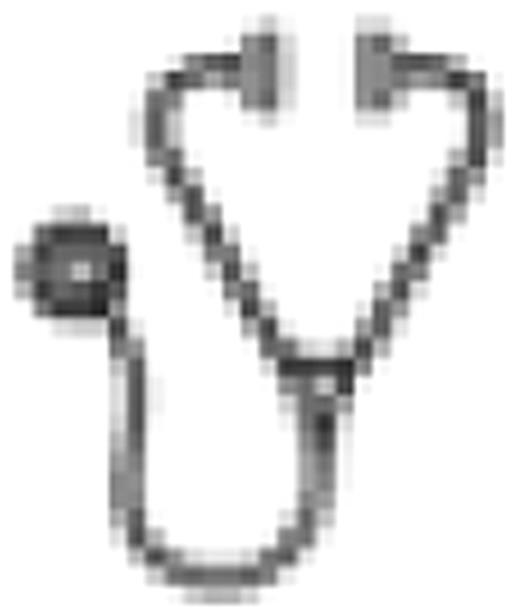Abstract
Abstract 3950
Reactivation of hepatitis B virus (HBV) was reported in patients who were being treated with rituximab-combination chemotherapy (R-chemotherapy). HBV reactivation was a well-known complication in lymphoma patients who were positive for hepatitis B surface antigen (HBsAg) in the pre-rituximab era. Recently, it was reported that HBV reactivation can occur in HBsAg-negative patients with past infection of HBV, upon administering R-chemotherapy for B-cell lymphoma. The association between rituximab and HBV reactivation is still unknown. There have been cases of HBV reactivation in patients with past HBV infection during the course of chemotherapy and/or immunotherapy, sometimes proving fatal. Nevertheless, it remains uncertain whether diffuse large B-cell lymphoma (DLBCL) patients with past HBV infection are at substantial risk for reactivation of latent HBV.
We prospectively studied the frequency of and risk factors for HBV reactivation in DLBCL patients who received R-chemotherapy. A total of 356 HBsAg-negative patients with DLBCL were treated with R-chemotherapy. Anti-HBs and anti-HBc tests were performed in all patients. In patients who were positive for anti-HBs and/or anti-HBc, serum HBV-DNA was measured. The serum HBV-DNA load was determined by quantitative RT-PCR [COBAS® AmpliPrep/COBAS® TaqMan® HBV-Test, Roche Diagnostics K.K. Tokyo, Japan].
A total of 356 HBsAg-negative patients with DLBCL were enrolled in this study. Among the 51 (16.2%) HBV carriers, 6 patients developed HBV reactivation and 45 patients did not develop HBV reactivation during the study period. Exploratory analysis was conducted on potential factors associated with the development of HBV reactivation. Male gender and having a low anti-HBs titer before R-chemotherapy were significantly associated with HBV reactivation. Age, clinical stage, B symptoms, lactate dehydrogenase (LDH), performance status, international prognostic index, and chemotherapy regimen were not associated with HBV reactivation. Among the 51 HBV carriers, 8 patients (15.7%) were positive for only anti-HBs, 27 (53%) were positive for both anti-HBs and anti-HBc, and 16 (31.3%) were positive for only anti-HBc. HBV reactivation occurred during or after R-chemotherapy in the 6 patients (12%); two patients developed reactivation after three or seven cycles of R-CHOP, respectively, whereas four patients developed reactivation after completion of R-CHOP therapy at a median interval of 90 days (range, 20 to 143 days). All 6 patients who developed HBV reactivation were positive for anti-HBc, and 3 of them were also positive for anti-HBs. The pretreatment anti-HBs titer of the 6 patients was low (range, <2.0 to 40.2 mIU/ml). When HBV-DNA became detectable in the serum, entecavir administration was started and the serum HBV-DNA became negative within 13 weeks. Elevation of ALT and AST was not observed in any of the 6 patients. The serum HBV-DNA level did not increase after entecavir administration was started in any patient. When HBV reactivation occurred, the liver function did not become elevated and HBsAg remained negative in all six patients. After serum HBV-DNA became undetectable, R-chemotherapy was resumed. None of the 6 patients developed hepatitis B. In the 6 patients who developed HBV reactivation, the anti-HBs titer before R-chemotherapy and the anti-HBs titer at the time of HBV reactivation did not significantly differ. In the 45 patients who did not develop HBV reactivation, the anti-HBs titer before R-chemotherapy ranged from 11.6 to <1,000 mIU/ml. After the end of R-chemotherapy, the anti-HBs titer was lower in 42 of the 45 patients. The posttreatment anti-HBs titer of the 42 patients was 10.2–542 mIU/ml. The anti-HBs titer returned to the value before the start of R-chemotherapy 6–18 months after the end of R-chemotherapy.
HBV reactivation occurred in some patients who had been anti-HBs-negative or had a low anti-HBs level. In addition, HBV reactivation occurred at an early stage of R-chemotherapy, but R-chemotherapy could be resumed after entecavir administration reduced the serum HBV-DNA level. Entecavir prophylaxis was not performed when R-chemotherapy was started, and it was thought that entecavir could be started when the serum HBV-DNA increased.
No relevant conflicts of interest to declare.

This icon denotes a clinically relevant abstract
Author notes
Asterisk with author names denotes non-ASH members.

This feature is available to Subscribers Only
Sign In or Create an Account Close Modal